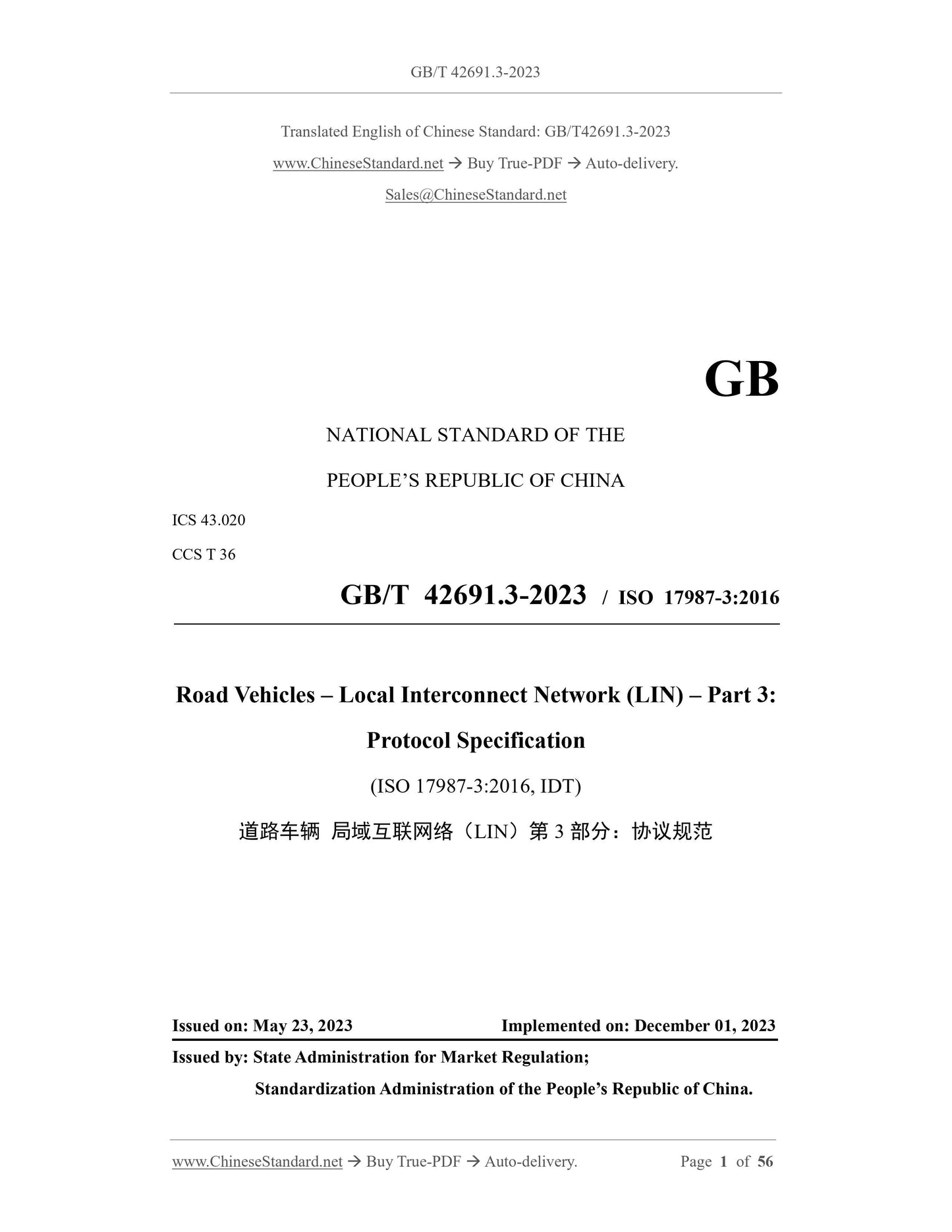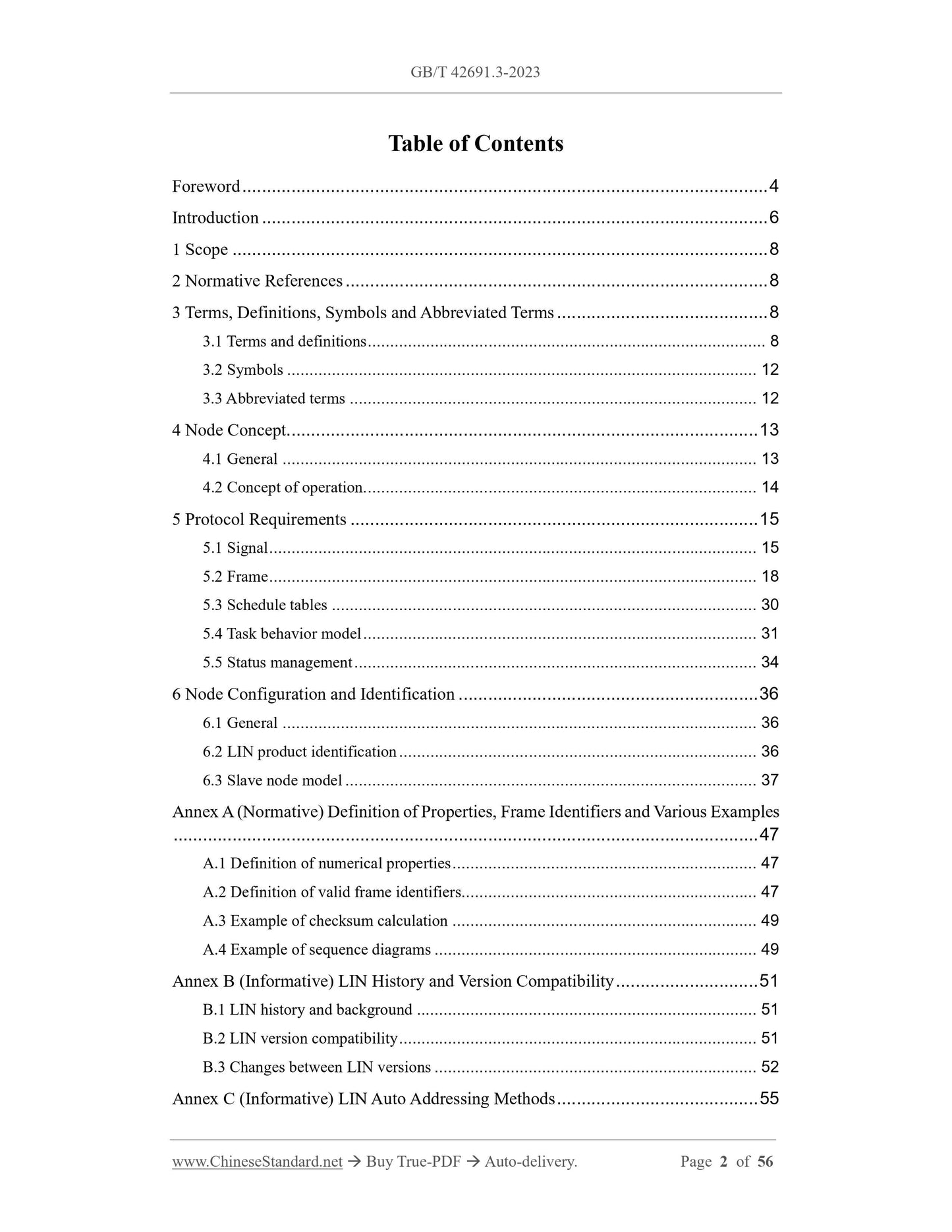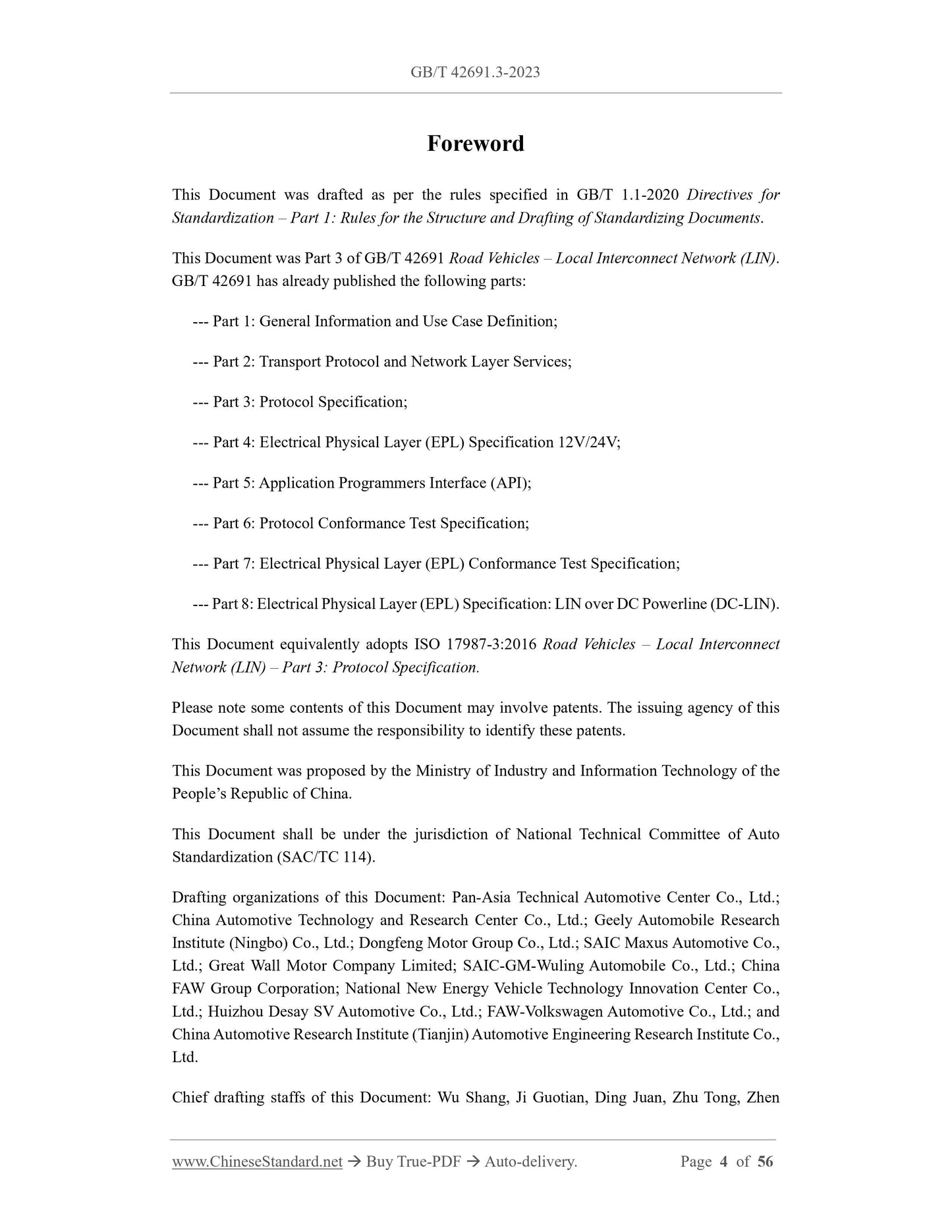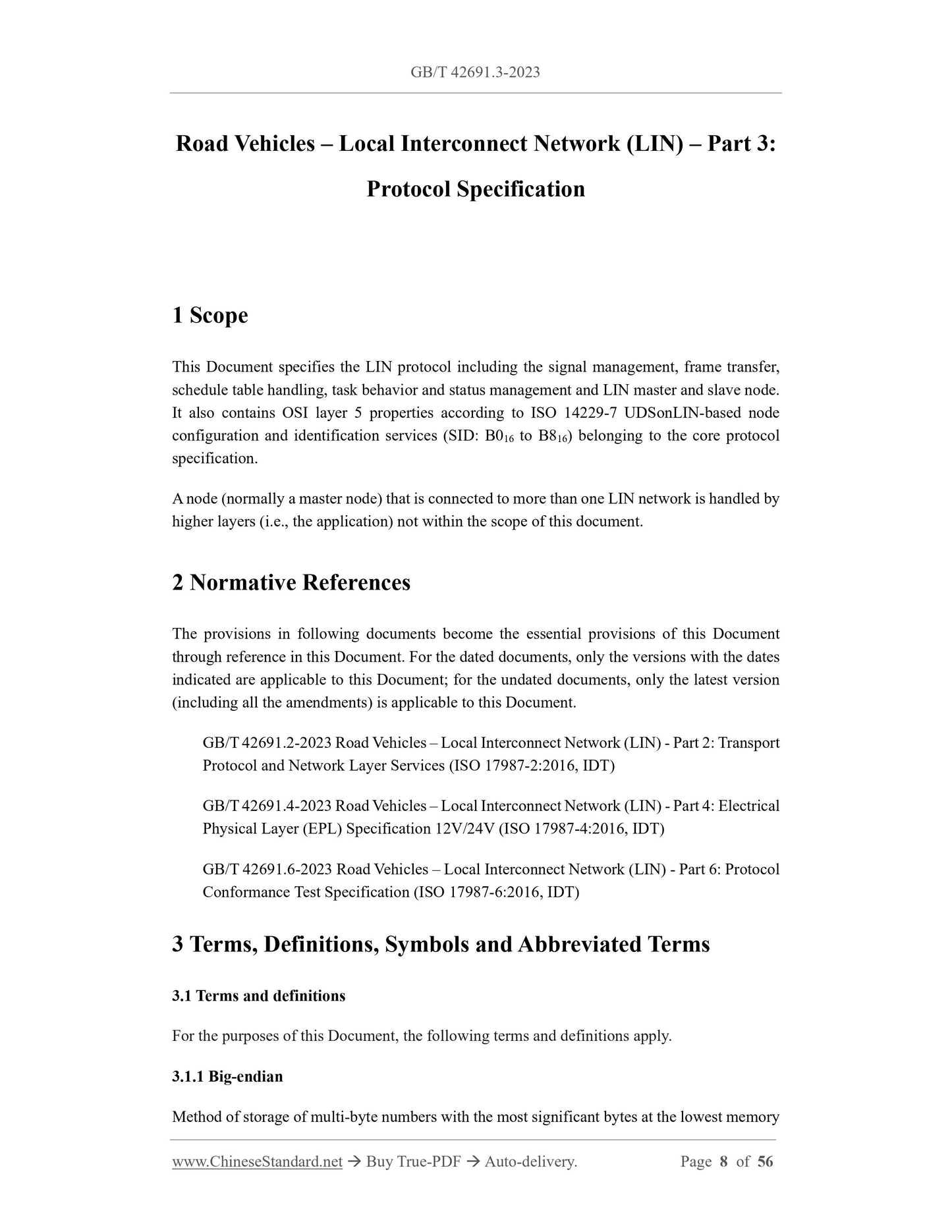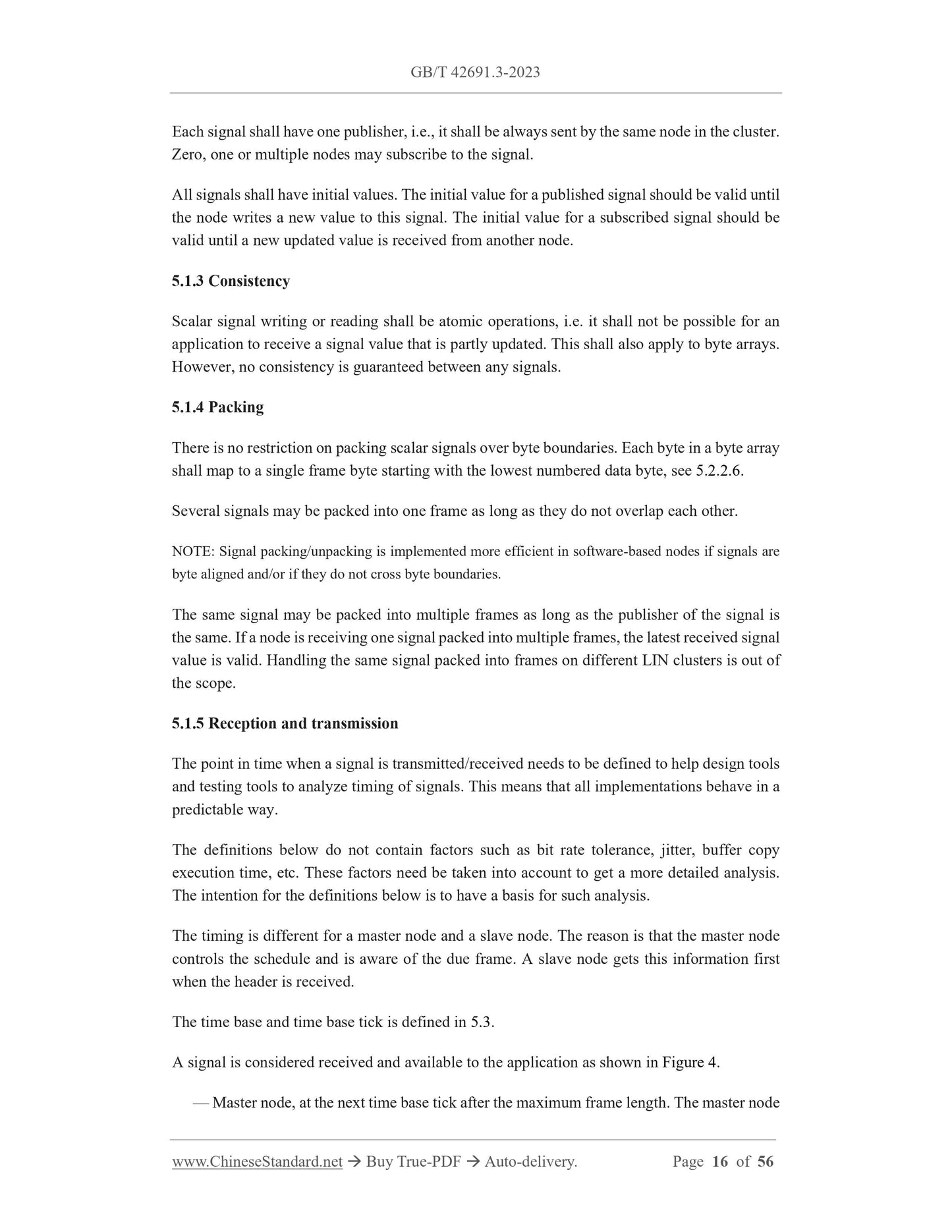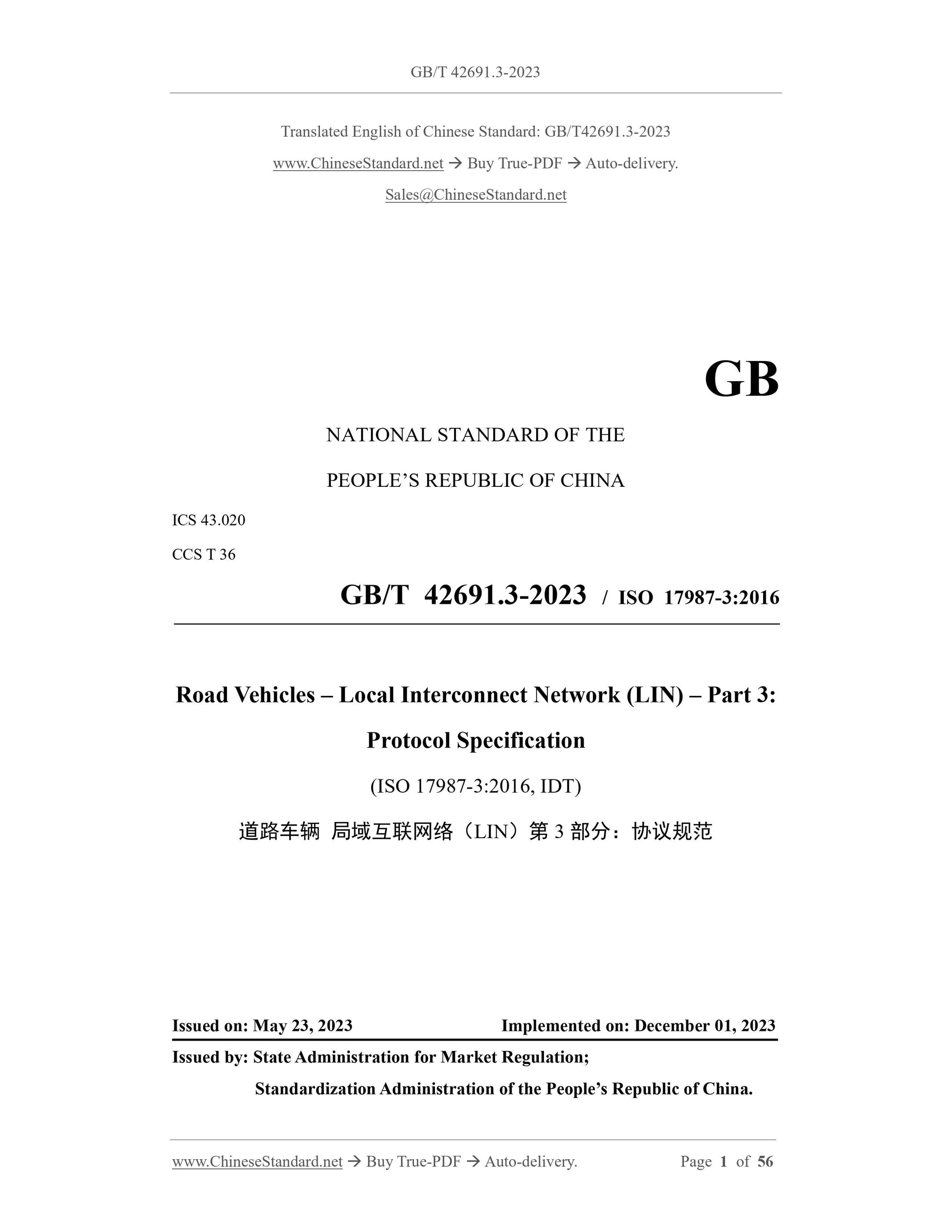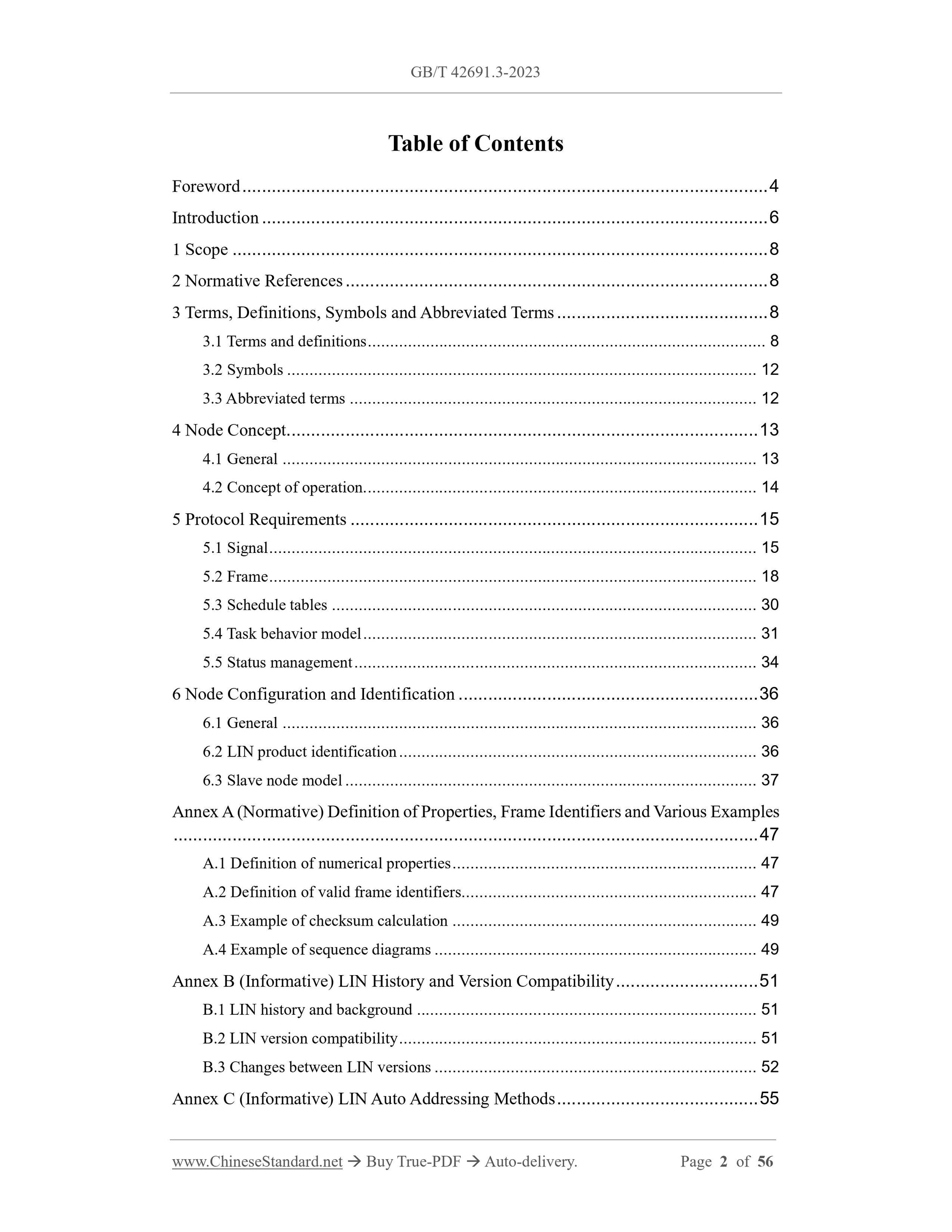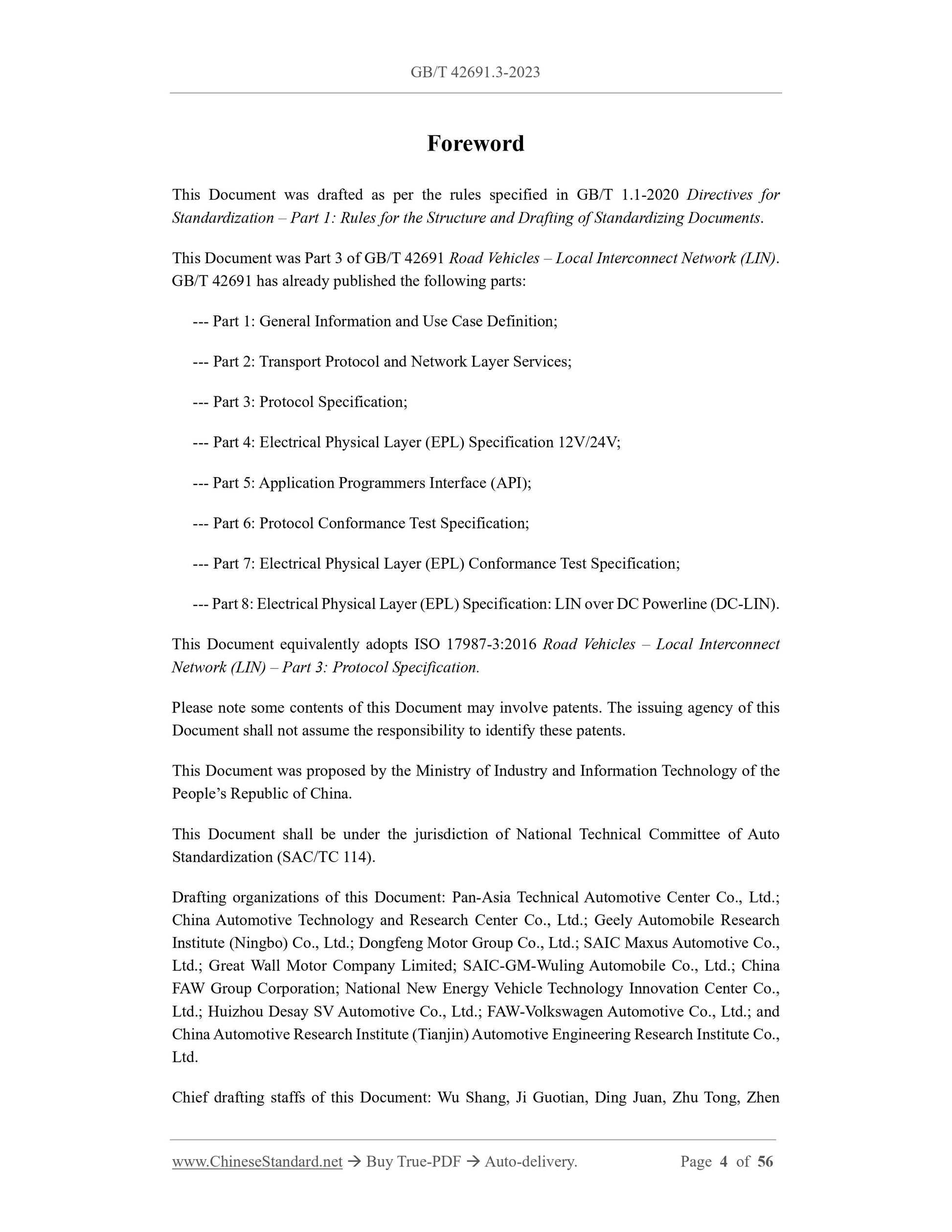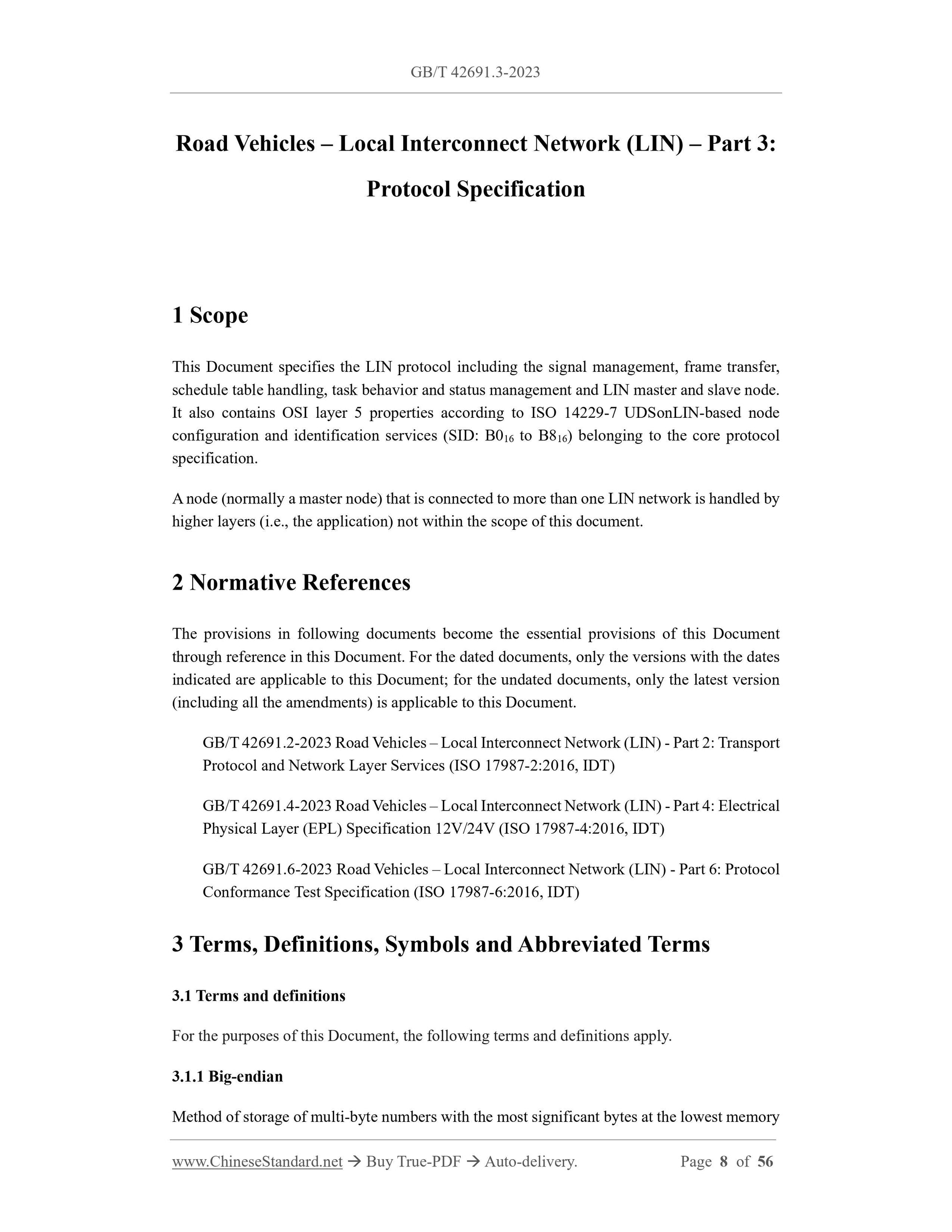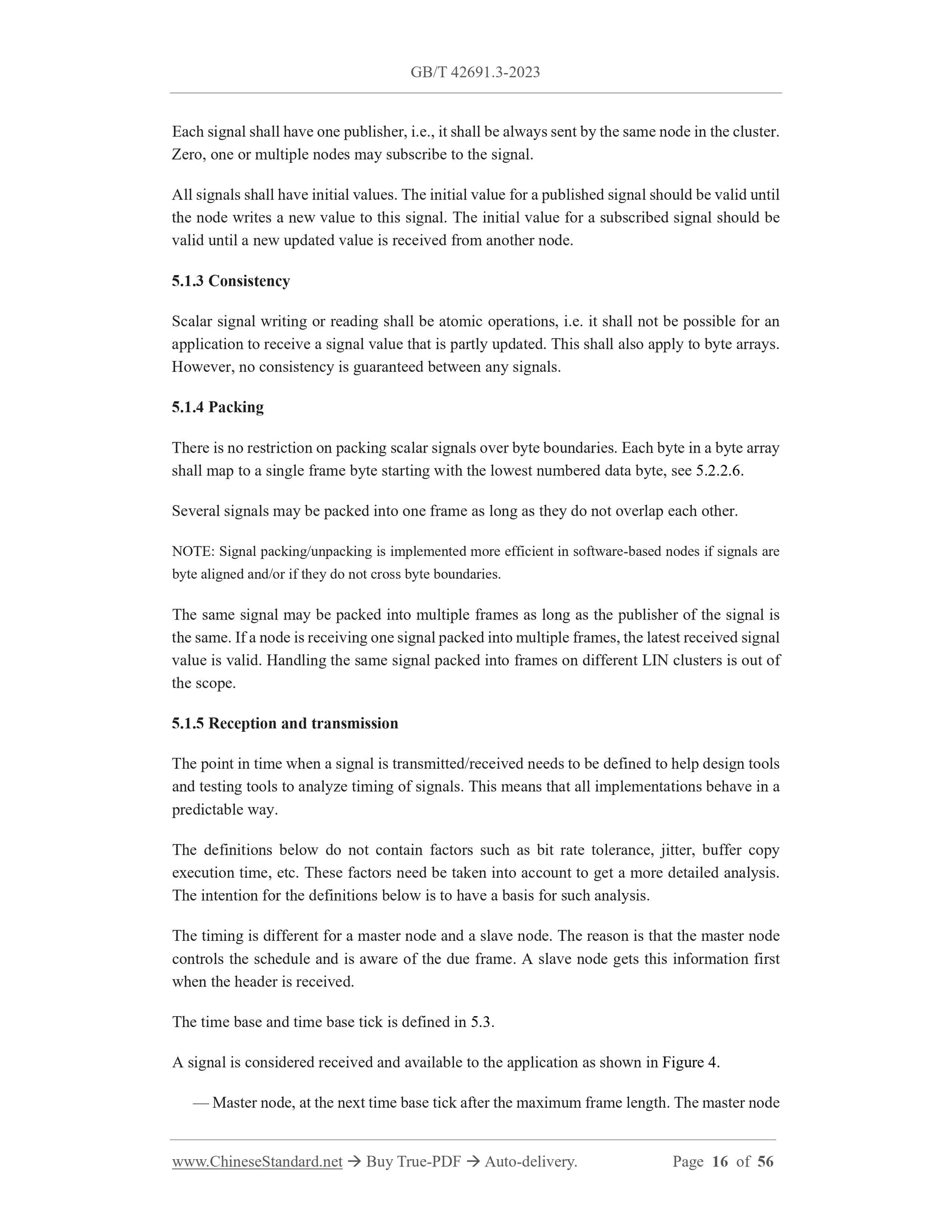1
/
of
6
www.ChineseStandard.us -- Field Test Asia Pte. Ltd.
GB/T 42691.3-2023 English PDF (GB/T42691.3-2023)
GB/T 42691.3-2023 English PDF (GB/T42691.3-2023)
Regular price
$650.00
Regular price
Sale price
$650.00
Unit price
/
per
Shipping calculated at checkout.
Couldn't load pickup availability
GB/T 42691.3-2023: Road vehicles - Local Interconnect Network(LIN) - Part 3: Protocol specification
Delivery: 9 seconds. Download (and Email) true-PDF + Invoice.Get Quotation: Click GB/T 42691.3-2023 (Self-service in 1-minute)
Newer / historical versions: GB/T 42691.3-2023
Preview True-PDF
Scope
This Document specifies the LIN protocol including the signal management, frame transfer,schedule table handling, task behavior and status management and LIN master and slave node.
It also contains OSI layer 5 properties according to ISO 14229-7 UDSonLIN-based node
configuration and identification services (SID: B016 to B816) belonging to the core protocol
specification.
A node (normally a master node) that is connected to more than one LIN network is handled by
higher layers (i.e., the application) not within the scope of this document.
Basic Data
| Standard ID | GB/T 42691.3-2023 (GB/T42691.3-2023) |
| Description (Translated English) | Road vehicles - Local Interconnect Network(LIN) - Part 3: Protocol specification |
| Sector / Industry | National Standard (Recommended) |
| Classification of Chinese Standard | T36 |
| Classification of International Standard | 43.020 |
| Word Count Estimation | 45,433 |
| Date of Issue | 2023-05-23 |
| Date of Implementation | 2023-12-01 |
| Issuing agency(ies) | State Administration for Market Regulation, China National Standardization Administration |
Share
